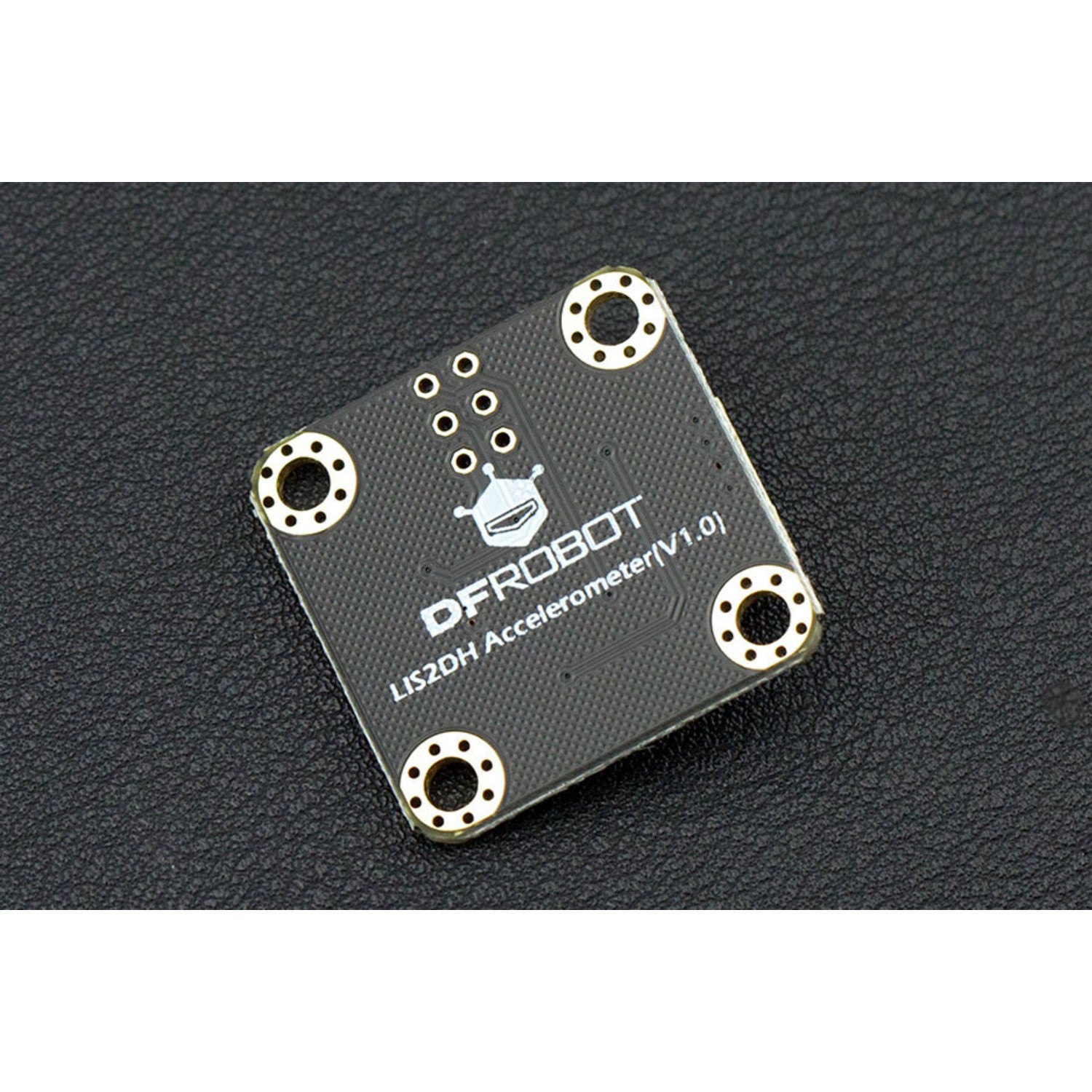DFRobot proudly presents an ultra - low - power Arduino triple axis accelerometer. This device uses a MEMS LIS2DH chip, offering a high - performance ultra - low power mode. It comes with a Gravity I2C interface, making it super easy to plug and play in your projects. The built - in LDO power management chip allows for a wide input voltage range from 3.3 to 5V. The on - board I2C level conversion ensures compatibility with both 3.3V and 5V devices. Compared to the traditional ADXL345, the LIS2DH accelerometer provides greater stability and more efficient power consumption. In low - power mode, it only consumes 2µA, while normal mode requires 11µA. The module can support an output frequency of up to 5.3KHz. You can adjust the sensitivity to ±2g, ±4g, ±8g, or ±16g, and it offers 16 - bit data outputs. There are 2 independent programmable interrupt generators for free - fall and motion detection, which can trigger interrupt wake - up. This versatile module has numerous potential applications, including wearable technology, display orientation adjustment, and impact recognition. Features include a Gravity plug - and - play interface, ultra - low power consumption (2uA), a fast response rate (up to 400KHz), a low price, and a compact and easy - to - install design. Applications range from motion - activated functions to gaming and virtual reality input devices. Specifications cover operating voltage (3.3V - 5V), operating current, interface type, adjustable sensitivity, frequency range, data output, and more. It also has an embedded temperature sensor, FIFO, and high impact resistance. The module comes with a product wiki and other documents, and the shipping list includes one Gravity I2C Triple Axis Accelerometer - LIS2DH and one Gravity - 4pin cable.


Using the Gravity I2C Triple Axis Accelerometer - LIS2DH is a breeze. First, connect it to your project using the Gravity I2C interface. It's a plug - and - play setup, so you don't need to worry about complex wiring. You can choose the power source within the 3.3V to 5V range. If you want to save power, switch to the low - power mode. In this mode, it only uses 2µA of current. For normal operation, the normal mode (11µA at 50Hz ODR) is a good choice. When using it, you can adjust the sensitivity according to your needs. You have four options: ±2g, ±4g, ±8g, or ±16g. This allows you to measure different levels of acceleration accurately. The module also has two independent programmable interrupt generators. You can use them for free - fall and motion detection. When these events are detected, the module will activate an interrupt wake - up. As for maintenance, keep the module in a dry environment within the operating temperature range of - 40 °C to +85 °C. Avoid exposing it to high - impact situations that could exceed its 1 million grams of high impact resistance. If you need more information, check the product wiki and other documents provided with the module.







